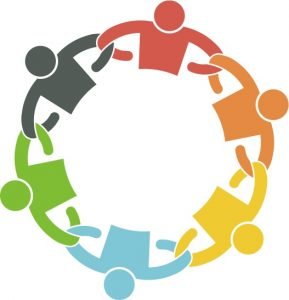Key Takeaways
- With hybrid work arrangements being the primary post-pandemic policy, some clients are requesting contractors also work onsite
- Working onsite builds stronger client relationships
- Yet it can also be detrimental to the contractor’s business under certain circumstances
Ah, the sweet smell of stale coffee and leftover fish being reheated in the microwave. The comforts of cubicles and public restrooms. And the sounds of IM pings, loud talkers, and conference calls on speaker phones. Admit it, you’ve missed the office.
In all seriousness, it’s easy to miss the office. Being back in a traditional office environment can be a great thing, especially if you’ve been working from home for a while. On the plus side, there’s the camaraderie, the jokes, and the chance to talk to real live human beings – in 3D – on a regular basis.
Besides, you know it’s important for your freelance business to put a face to an invoice and spend quality time with your clients.
14 Tips for Consultants
Working onsite creates a great opportunity for a freelancer to build their network and grow their business. If you’re going to work at a client’s office more than a few hours each week, here are some things to note before you show up on that first day.

1. Find out why the client needs you onsite
If it’s for a short sprint until a new product is launched or a full-time employee is hired, it can be a great opportunity. If it’s because they need to physically see you working, think twice about whether you want to work in this type of environment.
2. Ask your client to check with HR
Make sure all proper paperwork is signed before you arrive. This protects you and your client.
3. Appreciate the face time, but don’t have expectations
Being onsite can strengthen your relationship and extend your contract. On the flip side, you might discover that you and the client are a great working team but only when you interact on a limited basis. For this reason, always maintain a professional relationship, no matter how much time you’re spending together. If a friendship blossoms after the engagement ends, consider it a bonus.
4. Limit your participation in company meetings and events
Don’t feel like you have to attend company meetings, holiday parties and other activities designed for full-time employees. If there’s critical information being discussed during company meetings, you can get it afterwards from your client without cutting into your billable time.

5. Don't solicit other teams for additional work
While there’s potential to expand your scope to support other groups in communications and/or marketing, don’t solicit them for work. Let them seek you.
6. Don't let one client drive more than 50% of your revenue
Don’t risk your entire business by giving more than half your time to one client. And definitely try to avoid working as a contractor full-time for one client. Not only does this cut into your business, the IRS frowns on this behavior due to FICA and employment taxes. Your client could unwittingly find themselves in a pickle at tax time.
7. Never underestimate the importance of having a friend in accounting
While you’re expanding your network at the client site, get to know the accounts payable team to ensure prompt payment.

8. Connect, but don't join
It can feel great to be part of a team again, though know that your role is different from that of an employee. No matter how many team meetings and lunches you attend, you’re still self-employed and in service to the client. This requires you maintain distance so you can remain objective.
9. Build time into your schedule for commuting
Working onsite will impact your routine, probably more than you expect, especially when it comes to supporting other clients. Plan the commuting time into your day and don’t be surprised if your work day gets a little longer.
10. Be wise about how your spend your time
If the team consistently works late and there’s not a pressing deadline, don’t get caught up in the culture. You want to be part of it, but not confused with a full-time employee. Besides, in this scenario you can easily find yourself working late to look like a team player at the risk of sacrificing your other clients.
11. Expect not to work on other clients while you're onsite
It might seem like it’s something you can pull off, and the client might say they don’t have an issue with it, but the reality can often be different. You may feel guilty working on other client projects or taking a call from one of them. Besides, it’s hard to focus on other work when you’re immersed in your client’s environment.
12. You might have to invest in new clothes
It depends on your client’s work culture, but consider that you might have to spruce up your wardrobe before going onsite.
13. You will see and overhear things
You will overhear and see things that you wish you didn’t know; the kind of information you’d never get if your client relationship were limited to weekly status calls and regular check-ins. When this happens, it’s best to take a breath, find a way to politely extract yourself from the conversation, and get back to work.

14. Aim to develop relationships with the C-Suite
Aim to develop genuine relationships with member(s) of the C-Suite and let them know about your contributions. Look to your client to lead the formal introductions and never usurp them. But be mindful of the power of having your own relationships with members of the C-Suite.
Working onsite can be a great experience for you and the client. Just be sure you both respect and maintain boundaries that are within the company’s and the IRS tax guidelines, and there’s a clear understanding of the freelancer’s role.
ProsInComms members can download the e-book, “Answers to the Top 10 HR Questions Asked by Freelancers.”



